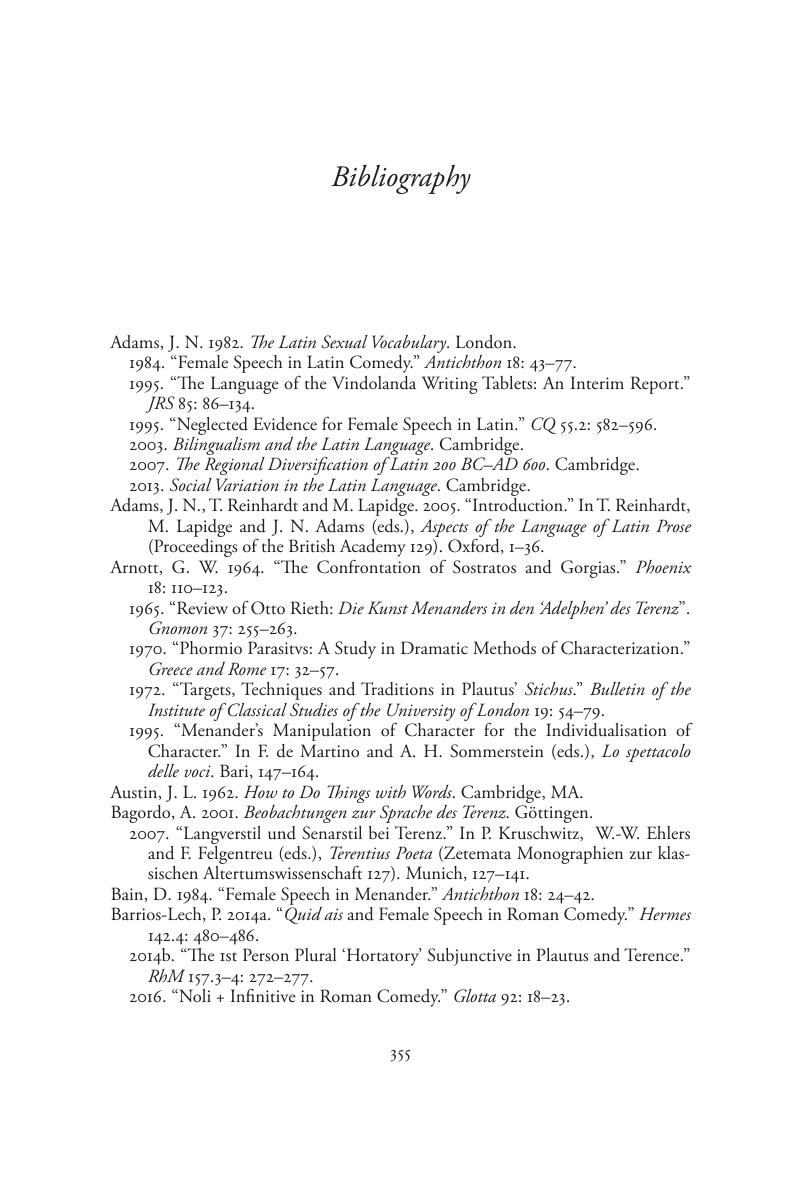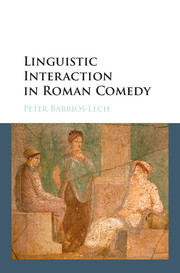Book contents
- Linguistic Interaction in Roman Comedy
- Linguistic Interaction in Roman Comedy
- Copyright page
- Dedication
- Contents
- Figures
- Tables
- Preface
- Acknowledgments
- Note on texts and translations
- Abbreviations
- Chapter 1 Introduction
- Part I How to command and request in early Latin
- Part II How to say “please” in early Latin, and more
- Part III How to greet and gain attention, and when to interrupt
- Part IV The language of friendship, the language of domination
- Part V Role shifts, speech shifts
- Book part
- Notes
- Bibliography
- Index rerum
- Index vocabulorum et locutionum
- Index locorum potiorum
- References
Bibliography
Published online by Cambridge University Press: 05 May 2016
- Linguistic Interaction in Roman Comedy
- Linguistic Interaction in Roman Comedy
- Copyright page
- Dedication
- Contents
- Figures
- Tables
- Preface
- Acknowledgments
- Note on texts and translations
- Abbreviations
- Chapter 1 Introduction
- Part I How to command and request in early Latin
- Part II How to say “please” in early Latin, and more
- Part III How to greet and gain attention, and when to interrupt
- Part IV The language of friendship, the language of domination
- Part V Role shifts, speech shifts
- Book part
- Notes
- Bibliography
- Index rerum
- Index vocabulorum et locutionum
- Index locorum potiorum
- References
Summary

- Type
- Chapter
- Information
- Linguistic Interaction in Roman Comedy , pp. 355 - 368Publisher: Cambridge University PressPrint publication year: 2016



